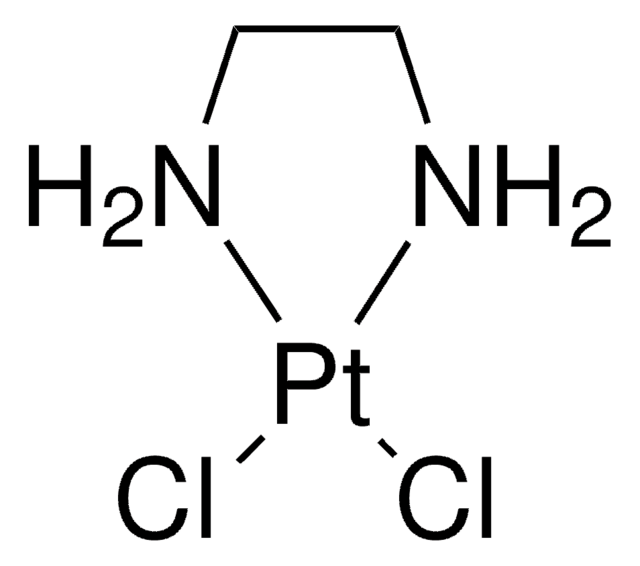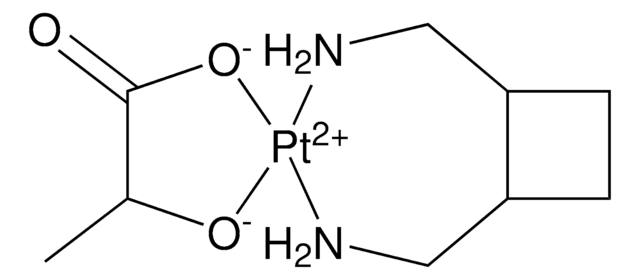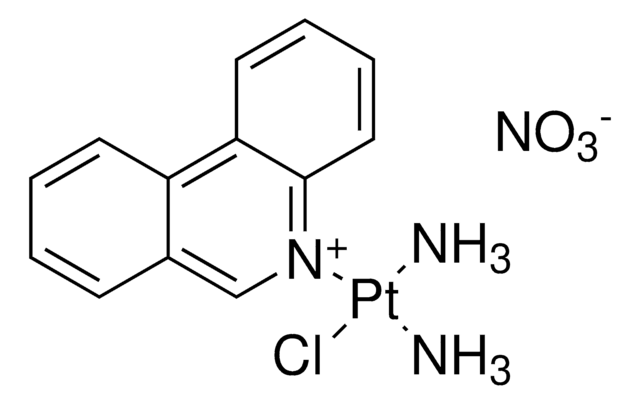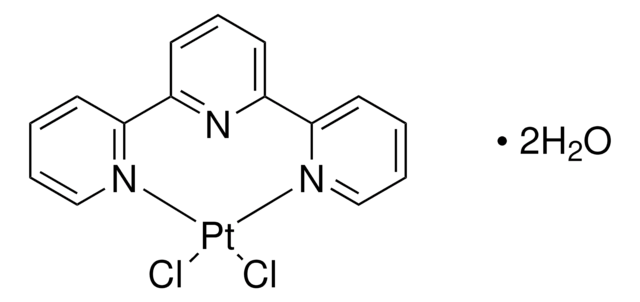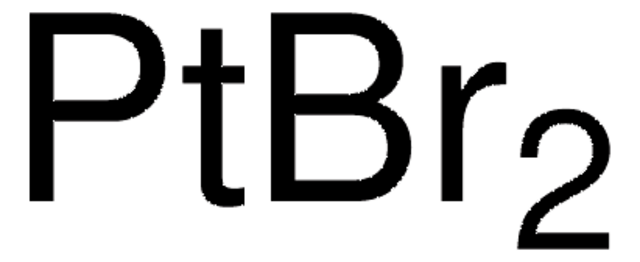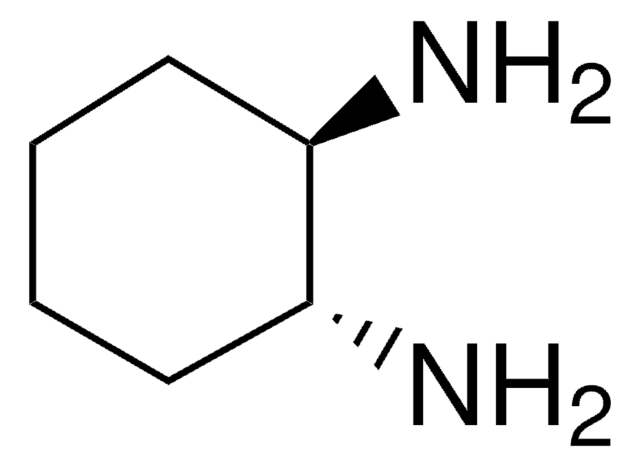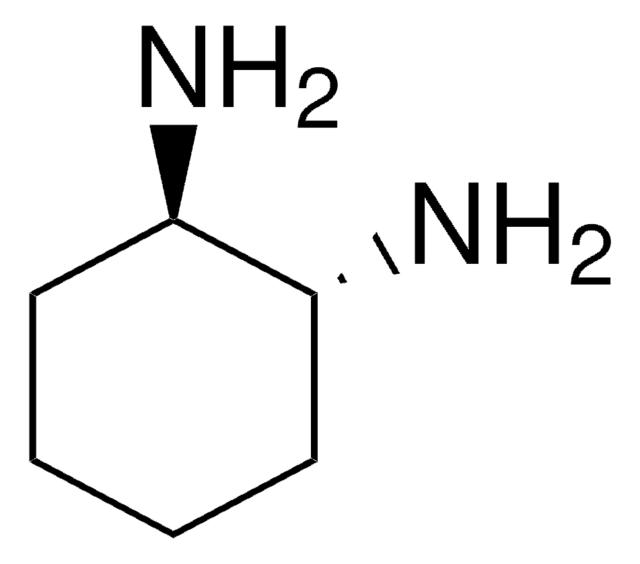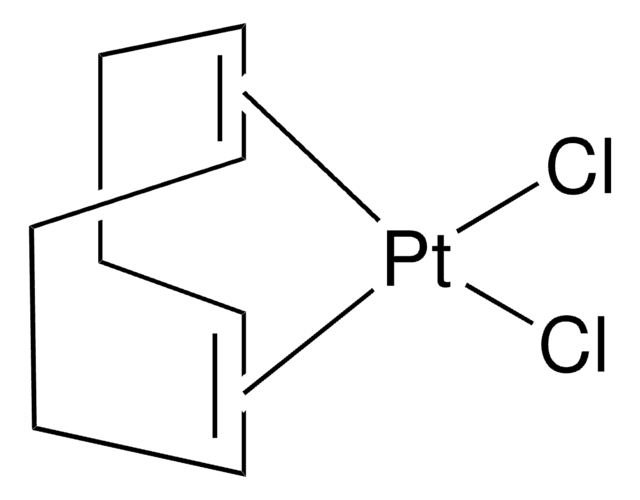404322
Dichloro(1,2-diaminocyclohexane)platinum(II)
Synonyme(s) :
(1,2-Diaminocyclohexane)platinum(II) chloride
About This Item
Produits recommandés
Pertinence de la réaction
core: platinum
reagent type: catalyst
Pf
280 °C (dec.) (lit.)
Chaîne SMILES
Cl[Pt]Cl.NC1CCCCC1N
InChI
1S/C6H14N2.2ClH.Pt/c7-5-3-1-2-4-6(5)8;;;/h5-6H,1-4,7-8H2;2*1H;/q;;;+2/p-2
Clé InChI
PNNCIXRVXCLADM-UHFFFAOYSA-L
Mention d'avertissement
Danger
Mentions de danger
Conseils de prudence
Classification des risques
Carc. 2 - Eye Dam. 1 - Lact. - Muta. 2 - Repr. 1B - Resp. Sens. 1B - Skin Sens. 1 - STOT RE 1
Code de la classe de stockage
6.1C - Combustible acute toxic Cat.3 / toxic compounds or compounds which causing chronic effects
Classe de danger pour l'eau (WGK)
WGK 3
Point d'éclair (°F)
Not applicable
Point d'éclair (°C)
Not applicable
Équipement de protection individuelle
Eyeshields, Gloves, type N95 (US)
Faites votre choix parmi les versions les plus récentes :
Déjà en possession de ce produit ?
Retrouvez la documentation relative aux produits que vous avez récemment achetés dans la Bibliothèque de documents.
Les clients ont également consulté
Notre équipe de scientifiques dispose d'une expérience dans tous les secteurs de la recherche, notamment en sciences de la vie, science des matériaux, synthèse chimique, chromatographie, analyse et dans de nombreux autres domaines..
Contacter notre Service technique